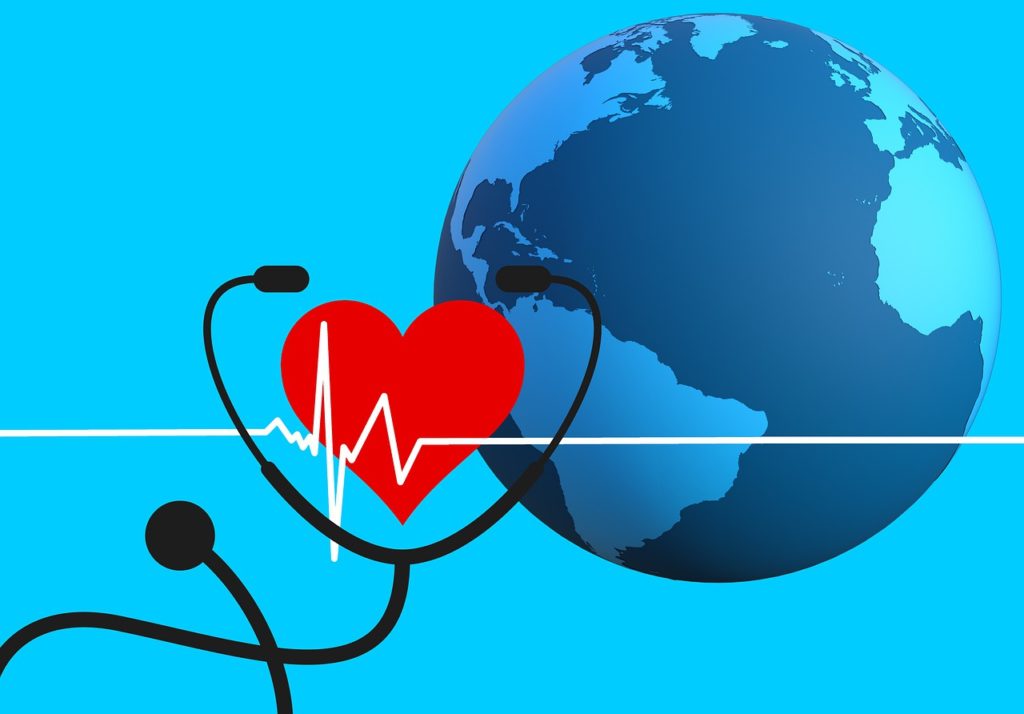GENEVA – April 7th of this year marks the occasion of the 70th anniversary of the observance of World Health Day. The special awareness day was established in 1948 by the first World Health Assembly (WHA). The WHA is the governing body over the World Health Organization (WHO), the sponsor of World Health Day.
The 2020 Theme
 Typically, the WHO “organizes international, regional, and local events” for World Health Day devoted to a selected theme. The theme for this year is “Support Nurses and Midwives.” However, given the current Coronavirus pandemic, the day is likely to be observed primarily, if not exclusively, via digital media.
Typically, the WHO “organizes international, regional, and local events” for World Health Day devoted to a selected theme. The theme for this year is “Support Nurses and Midwives.” However, given the current Coronavirus pandemic, the day is likely to be observed primarily, if not exclusively, via digital media.
WHO and its partner organizations have compiled the first State of the World’s Nursing Report that is expected to be released in conjunction with World Health Day.
“The report will provide a global picture of the nursing workforce and support evidence-based planning to optimize the contributions of this workforce to improve health and well-being for all.”
Meanwhile, WHO has published several interesting key facts about nursing and midwifery prior to the annual observance. Those facts include:
- Globally, 70% of the health and social workforce are women. Nurses and midwives represent a large portion of this.
- Nurses and midwives have a relationship with their patients that is based on trust; knowing the full picture of someone’s health helps improve care and saves money. They also know the traditions, cultures, and practices of their communities, making them indispensable during an outbreak or emergency.
- Achieving health for all will depend on there being sufficient numbers of well-trained and educated, regulated and adequately supported nurses and midwives, who receive pay and recognition commensurate with the services and quality of care that they provide.
- There is a need to do more to ensure that nurses and midwives can work in an environment where they are safe from harm, respected by medical colleagues and community members, and where their work is integrated with other health-care professionals.
SDG-3
Since the creation of the United Nations’ Sustainable Development Goals for 2030, the annual themes have been linked to SDG-3, “Good Health & Well-Being.” Section 3.3 of SDG-3 is to reduce “the epidemics of AIDS, tuberculosis, malaria and neglected tropical diseases and combat hepatitis, water-borne diseases and other communicable diseases.”
Antimicrobial Resistance and its Global Spread
Perhaps the greatest irony surrounding World Health Day lies in its theme introduced 2011: “Antimicrobial resistance and its global spread.”
The point was to increase governments and stakeholders “awareness of factors that contribute to antimicrobial resistance, to build commitment to common solutions across diseases, and to encourage the implementation of policies and practices that can prevent and contain antimicrobial resistance.”
On that occasion, the WHO introduced “a six-point policy package to combat the spread of antimicrobial resistance.”
- Commit to a comprehensive, financed national plan with accountability and civil society engagement.
- Strengthen surveillance and laboratory capacity.
- Ensure uninterrupted access to essential medicines of assured quality.
- Regulate and promote rational use of medicines, including in animal husbandry, and ensure proper patient care; reduce the use of antimicrobials in food-producing animals.
- Enhance infection prevention and control.
- Foster innovations and research and development for new tools.
We are currently in the sixth year of the Sustainable Development Goals. The irony of the COVID-19 virus invasion seems to indicate that the organizations chartered with achieving SDG 3 are struggling to achieve their optimistic objectives.
As of 6:00 pm CDT, April 3, 2020, the global toll of the Coronavirus stands at
- 1,094,068 cases
- 808,809 active cases
- 769,402 in mild condition
- 39,407 in serious or critical condition
- 58,817 deaths
The stay-at-home and isolate-in-place mandates have provided an ideal time for many Christian people around the world to have an uninterrupted time of intercessory prayer for those threatened by the spread of the virus. We have a compassionate Lord and Savior who loves every one of His created beings. Appeal to His grace and mercy on behalf of those affected by COVID-19. God is more powerful than any diseases that may confront us.
To read more news on the COVID-19 pandemic on Missions Box, go here.
GFA’s Statement About Coronavirus
KP Yohannan has issued two statements about the COVID-19 situation found here and here.
Sources:
- WHO, What Is World Health Day About?
- WHO, World Health Day 2020 Key Facts
- IISD, SDG Knowledge Hub
- Wikipedia, World Health Day
- The Pan American Health Organization, World Health Day 2011
- WHO, World Health Day 2011: Policy Briefs




